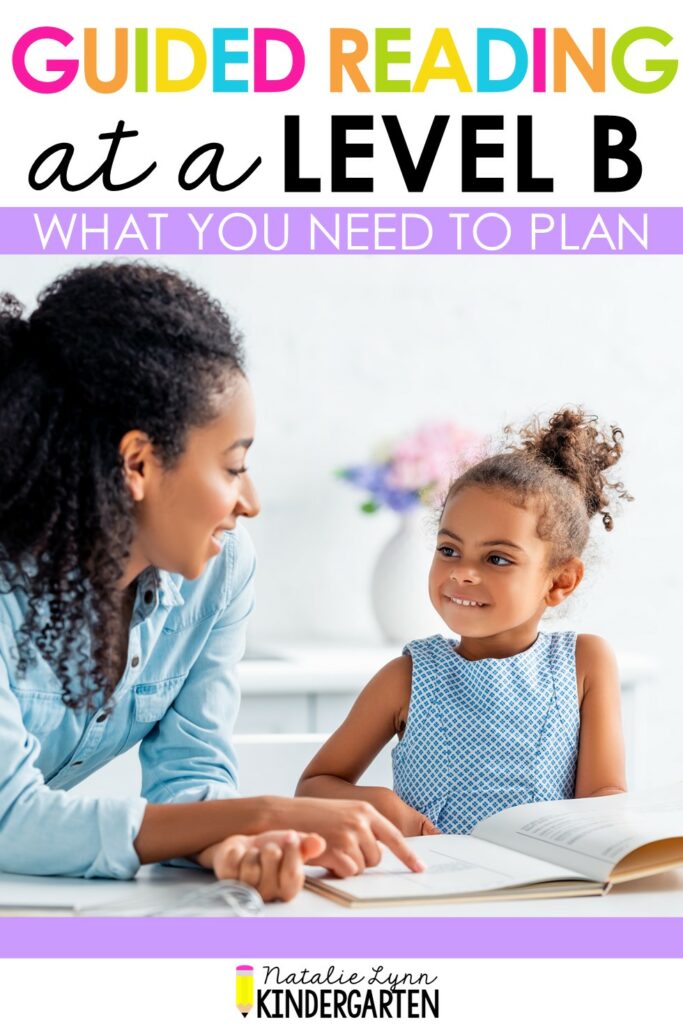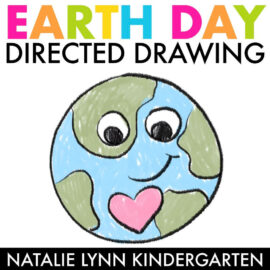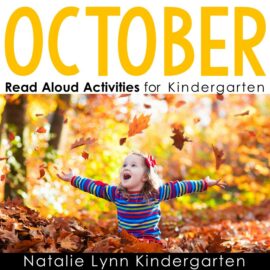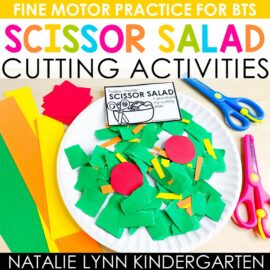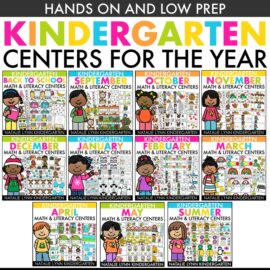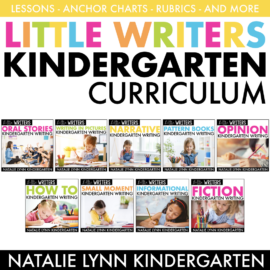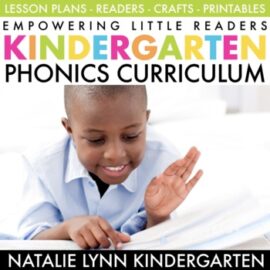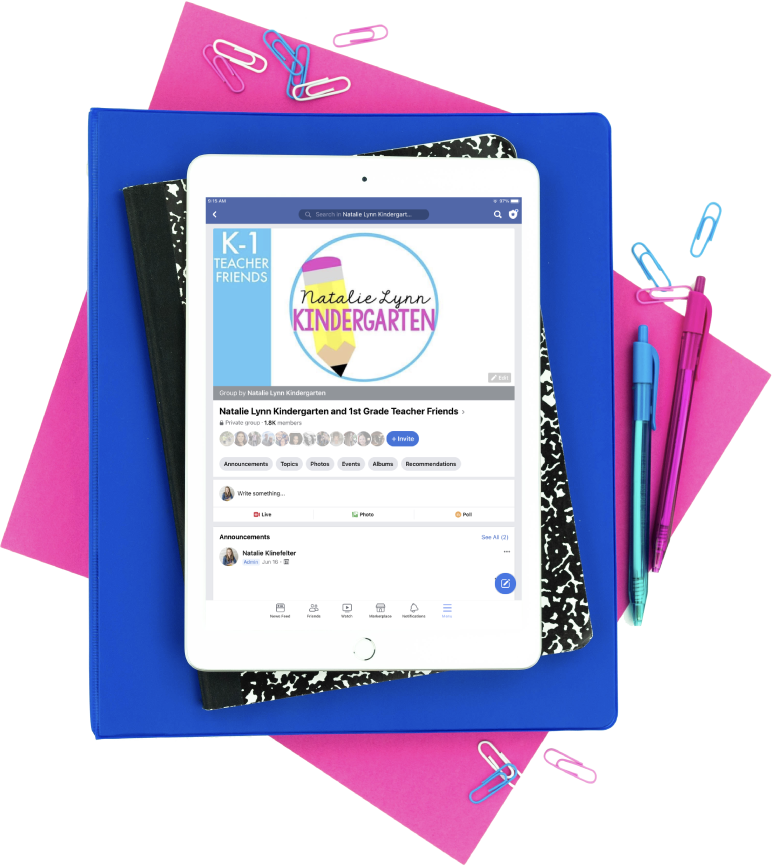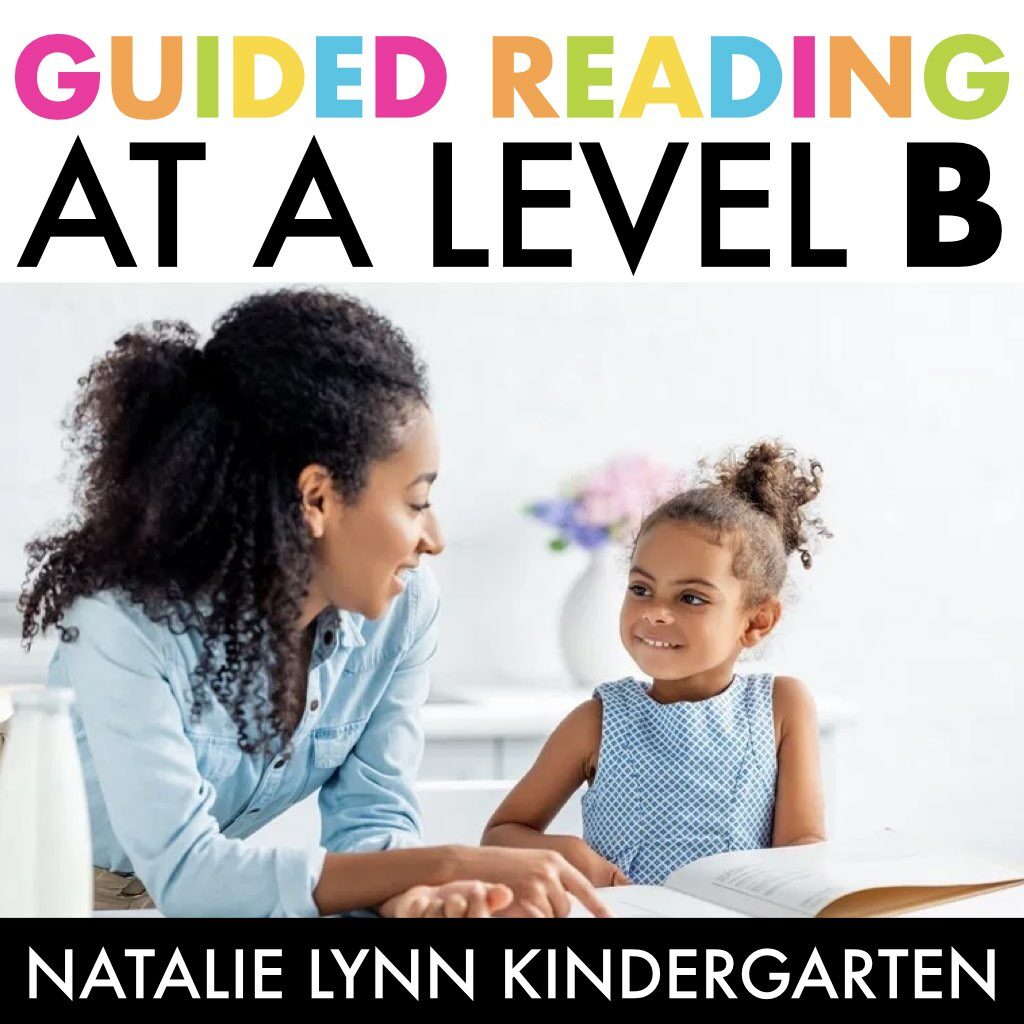
This blog post will walk you through the characteristics of Level B readers and what to include in a Level B guided reading lesson.
Hip hooray! Your students are on their way to becoming strong readers. Your kindergartners are reading fluently at a guided reading Level A. So now what?
Your kindergarten students are ready to move on to a level B! At a guided reading level B, your students will really start to shine as independent readers.
They will begin to focus on the words rather than following a pattern. Their phonemic awareness and phonics skills will begin to take off.
It’s an exciting time!
Emergent Level Reading
Just like at the guided reading Level A, level B readers are emergent level readers. The emergent level of guided reading includes a wide-range of students. When students begin the emergent reading level, they are brand new to text and are reading simple, patterned text.
By the time students leave the emergent reading stage at a level C, they are beginning to decode and problem solve as they read.
When your students are at a guided reading level B, they are right in the middle. They are still reading simple, patterned text, but the pattern may change at times. They most likely have strong letter sound knowledge and are ready to work on ending sounds and decoding 2 phoneme words.
What to Work On With Your Level B Guided Reading Groups
Before you begin planning your kindergarten guided reading groups, I suggest you do a cold read with students of a Level B text.
A cold read means that the student is reading a book or leveled passage that they have never been exposed to before. As they are reading, you will take a running record.

This cold read will show you how independent students are at that level, what reading strategies they rely heavily on, and what areas you need to strengthen.
If a student completely shuts down at a guided reading level B, you may need to stay at a guided reading level A as you work on strategies for reading independence. If you do move on to a guided reading level B, you will want to plan your first few lessons to give that student extra support and scaffolding.
Guided Reading Level B Lesson Plans
Now that you know where your students are, you can begin planning your guided reading level B small group lessons. Remember, even if you have multiple small groups at this level, each group will most likely need different teaching points. I suggest grouping your students by what skills they need to work on.
We always begin our kindergarten guided reading groups with a guided reading warm up. Even though my level B students know most of their letter sounds, we still begin with our alphabet chart routine.
As students master a skill, it is normal for them to have some lapses in it. Having this extra time for review is a quick and easy way to help cement those sounds.
Before we read, I also assess sight words. I will have my group take out their dry erase board and marker. They will write 2-3 words as quickly as they can. I just put a check by that word in my records if they get it correct.
Guided Reading Level B: Before You Read
You will want to have a quick teaching point before your students read. At the beginning, this teaching point will most likely be about a reading strategy. For example, cross checking the words with the pictures.
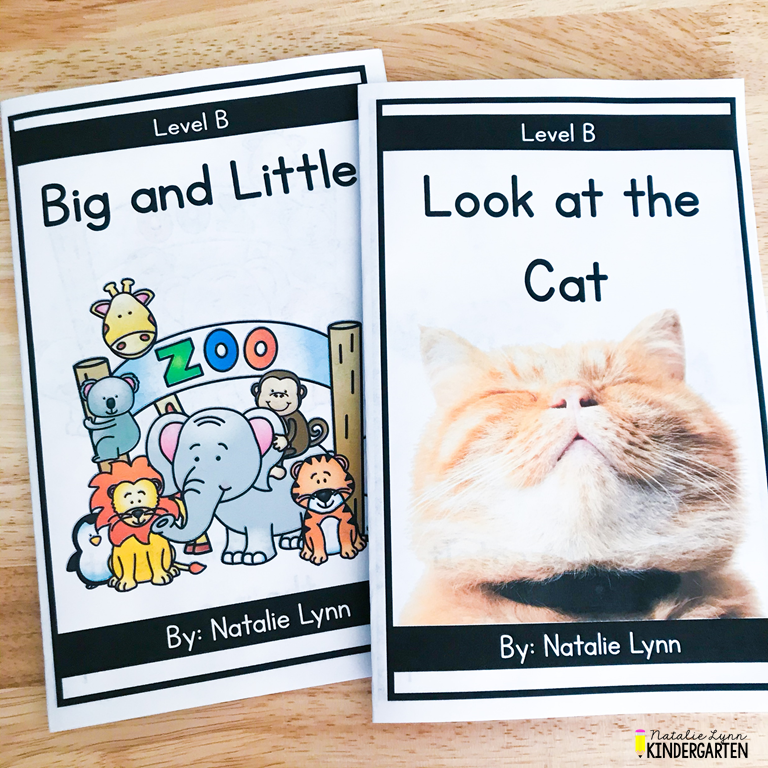
Some teaching points for you guided reading level B lesson:
- Point to each word and make sure you ONLY read what is on the page.
- How can I help myself if I get stuck?
- Paying close attention to the text to notice a change in pattern.
- Use a return sweep while reading two line text.
- Thinking, does this make sense?
- Checking the first sound of unknown words.
- Going back to reread.
- Stopping to think about what you read.
You will want to choose only one teaching point each lesson. Make sure that you only talk about that one teaching point. Any more will be confusing and overwhelming.
Guided Reading Picture Walk
Before you read, you will introduce the book. Show students the front cover and the title. Discuss what the book is about.
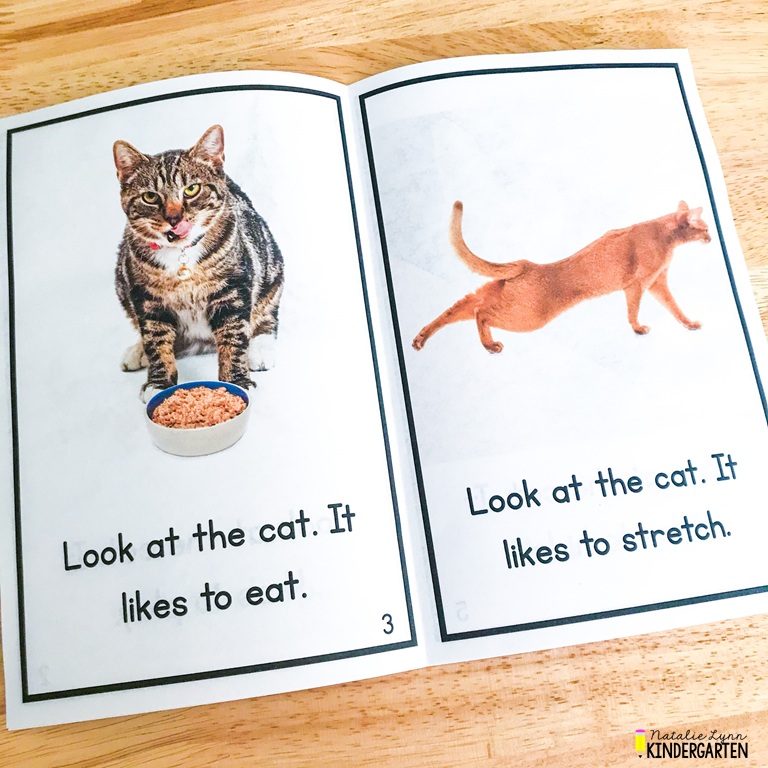
You will want to go over vocabulary words found in the book. An easy way to do this is by doing a guided reading picture walk. When you do a picture walk, you flip through the book together and discuss what you notice about the pictures.
As you do the picture walk, you will want to make sure that you are using the vocabulary words found on each page. During the guided reading picture walk, you are not looking at the words. You are only looking at and discussing the pictures.
If you have a new sight word or you feel like your students need support focusing on sight words in the text, you have have your students frame the words. Have your students turn to a random page. Then, call out a sight word and have students use their pointer fingers to “frame” that word in the sentence. Begin with words you students know and then have them find the new word.
Guided Reading Level B Lesson
Now it is time to read! Students at this level will be reading level B guided reading books. These books are still very patterned, but the pattern may change on 1-2 pages.
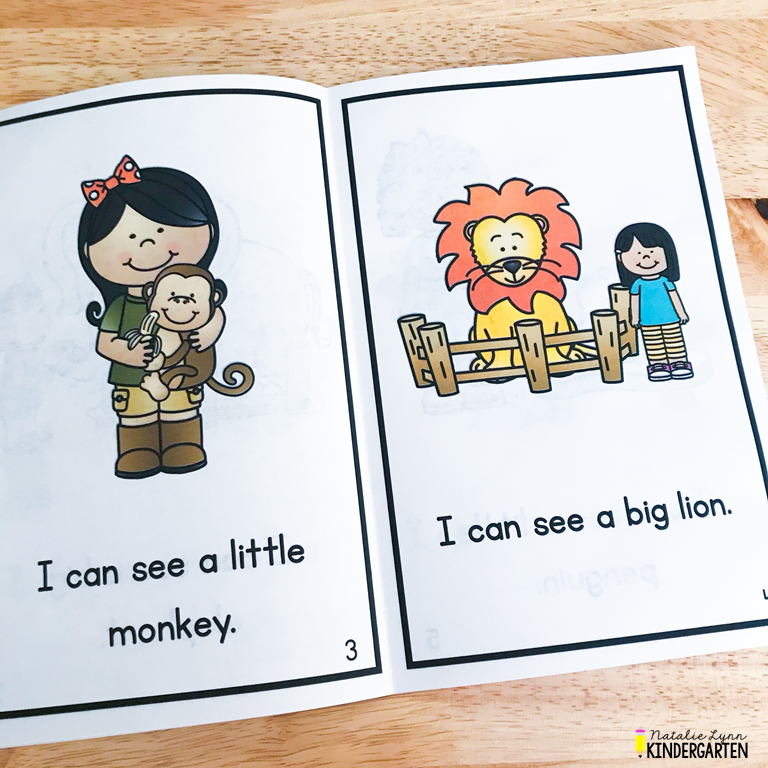
Level B guided reading books have longer sentences than level A. These sentences may fit on two lines. Students at a guided reading level B should be able to use a return sweep when reading.
In our guided reading level B lesson plans, we will read a book for two days. The first day is to focus on reading strategies and comprehension. The second day is to focus on reading fluency, comprehension, and guided writing.
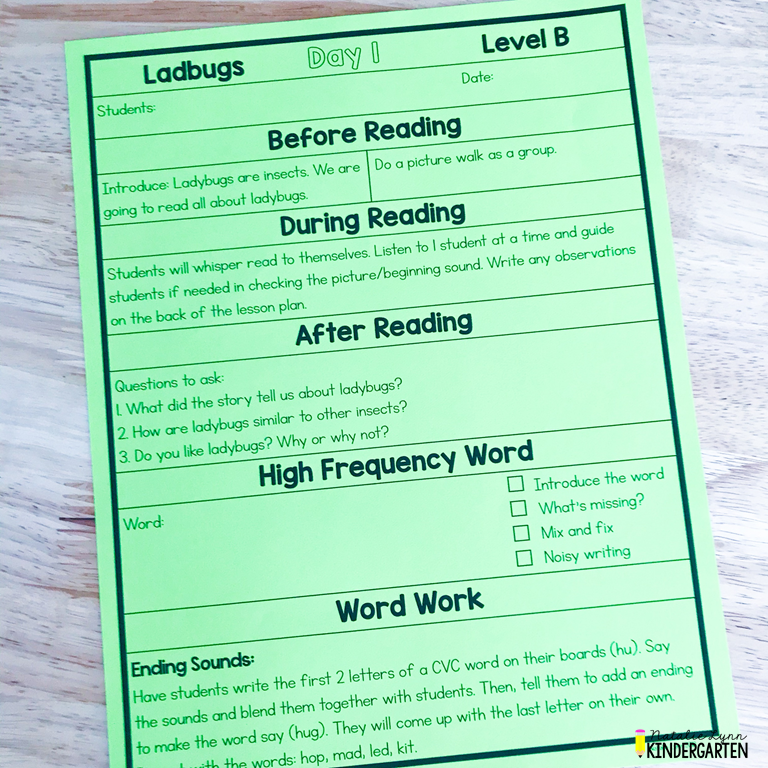
At a guided reading level B, your students should be reading independently. We do not choral read or round robin read. Why? Because then your students aren’t doing the real work. They are relying on you or the rest of the group.
To see results, your students need to be doing the work. As students are whisper reading to themselves, I will listen to one student at a time. As I listen, I will take a running record or write notes on my lesson plans.
This is also when you will support individual students and re-teach specific strategies. If a student is stuck, don’t jump right in to help. Remember, your goal is to build independent readers.
Instead, try an open ended prompt:
- What can you try?
- How to you know?
- How did you figure that out?
- You tried __. How can you check to see if you’re right?
If a student struggles to move on, you can prompt them with a specific strategy to try.
You will most likely have students who finish before everyone else. I tell them, read it again! Great readers reread until they know a book by heart.
After Reading
When our independent reading time is over, we discuss what happened in the story. At a guided reading level B, the stories are patterned. It is a great time to work on sequencing.
Some reading comprehension prompts you may use:
- What happened in this story?
- What happened in the beginning, middle, and end?
- What does this story remind you of?
- What was the setting? Who were the characters?
Guided Reading Level B Word Work Activities
Level B readers should be reading to focus on beginning and ending sounds as well as decoding two phoneme words. For our kindergarten guided reading group, I choose one skill to focus on.
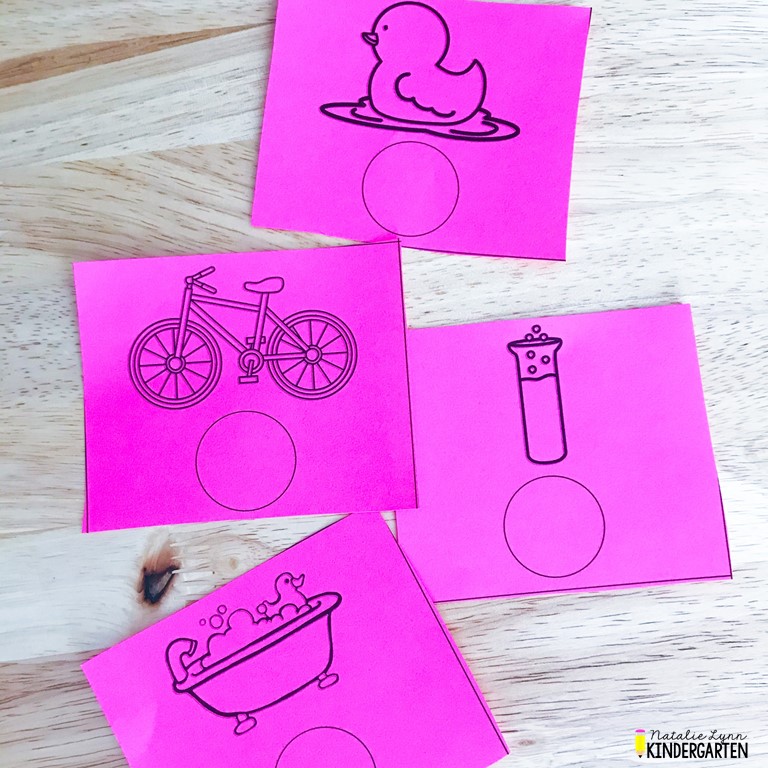
Ending sounds smash is a favorite activity. For this one, students make a ball of playdough. I say a word. Then, they use their fist to smash down the dough as they say the ending sound.
I will also have my students work on identifying the beginning and ending sounds in CVC words. We use these CVC word worksheets for this. There is a version that has the vowels filled in, so students only have to write the beginning and ending sounds.
Finally, we may work on two phoneme words. For oral phonemic awareness practice, I will show students a picture and have them segment the sounds.
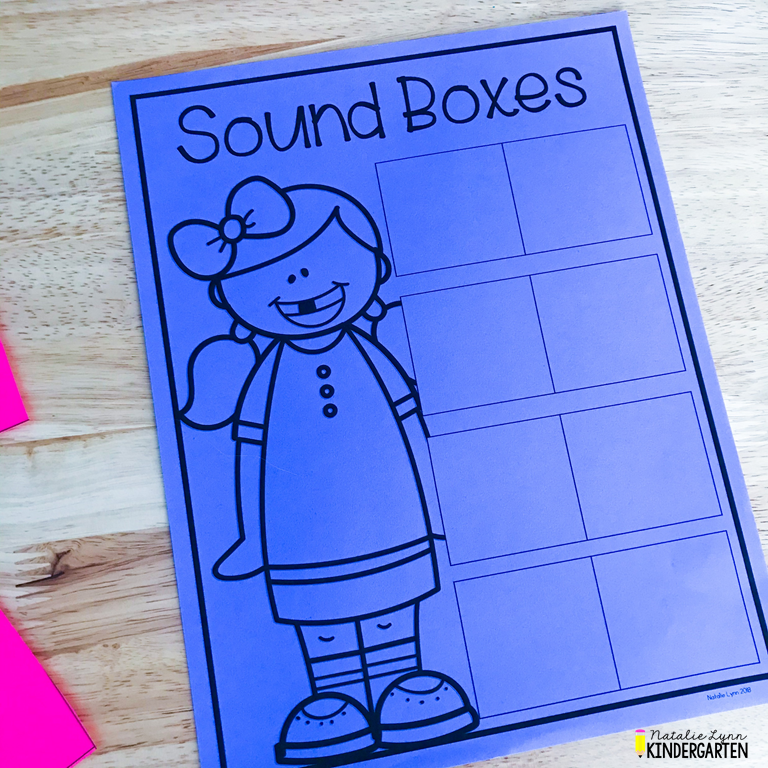
We practice writing two phoneme words as well using sound boxes. I will say a word and students will tap the sounds in the boxes. Then, they will write the words. Words you may use: go, no, so, am, an, at, as, in, is, it, up, on.
Level B Sight Word Practice
We will focus on one sight word during the two day lessons. This sight word may be our focus word for multiple books. We work with this sight word until the majority of students have mastered both reading and writing it.
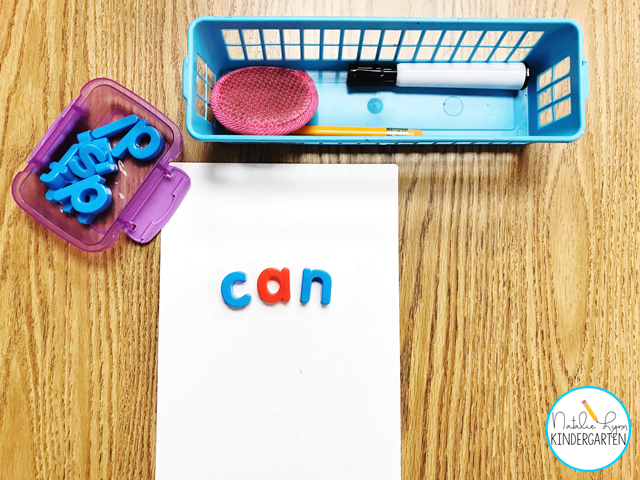
You can read a step-by-step of our guided reading sight word routine here.
Guided Writing with Level B Students
We do guided writing on day two of our guided reading lesson plans.
For guided writing with level B students, I will choose a sentence with 5-7 words. This sentence usually follows the pattern from our guided reading book. Usually, I let students choose their own picture word.
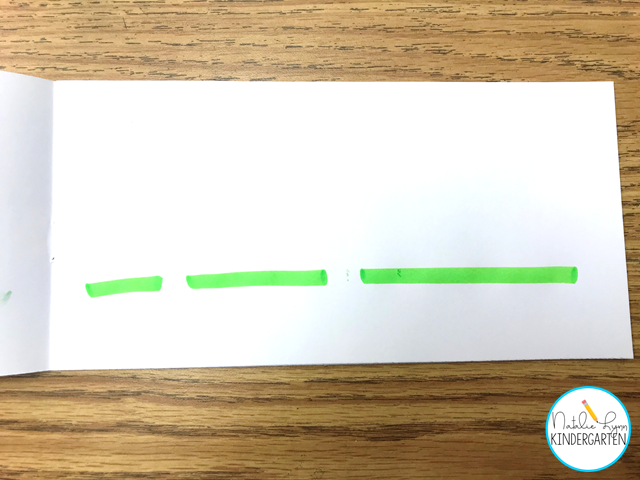
Then, I draw guided writing lines for each student. I have them point to each line and say the sentence before they begin writing.
As they are writing, you can prompt students to go back and tap the lines as they reread. This helps them if they forget the sentence or skip a word.
When they get to unknown words, you can prompt students to write the sounds they hear. At a level B, we want students to hear the beginning and ending sounds.
I will write the correct spelling under the words for my own records, but I never do this in front of students.
Want Your Level B Guided Reading Groups Already Planned For You?
My Level B Guided Reading Unit contains all the guided reading resources you need to teach your kindergarten guided reading groups. It contains 12 Level B guided reading books, two day lesson plans, running records, word work activities, and more!
If you are distance learning, this unit also includes digital books and digital word work activities. This would also be a great, no print way to share guided reading resources with families.
Grab the Guided Reading Level B Unit HERE!
You may also like these Guided Reading Level B Boom Cards. They have a digital guided reading lesson, book, and word work activities all wrapped up in single decks.
Pin this post for later:
